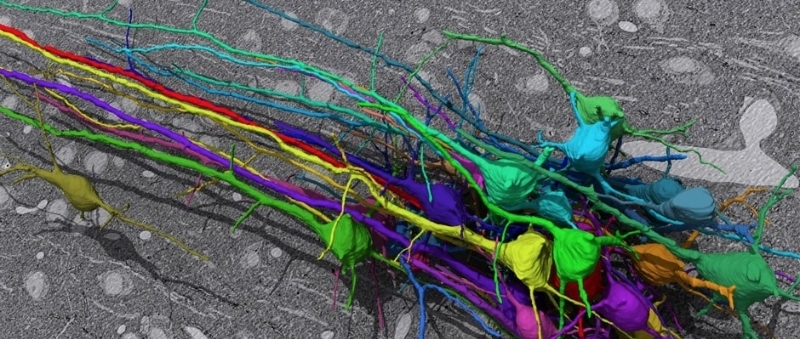Snip
|
Enlarge image
|
|---|
Categories |
|
|---|
For Snip |
loading snip actions ... |
|---|---|
For Page |
loading url actions ... |
Daniel Berger, a researcher at MIT, traced these neurons using the EyeWire game.

Daniel Berger, a researcher at MIT, traced these neurons using the EyeWire game.
EyeWirePeople can get pretty addicted to computer games. By some estimates, residents of planet Earth spend 3 billion hours per week playing them. Now some scientists are hoping to make use of all that human capital and harness it for a good cause.
Right now I'm at the novice level of a game called EyeWire, trying to color in a nerve cell in a cartoon drawing of a slice of tissue. EyeWire is designed to solve a real science problem — it aims to chart the billions of nerve connections in the brain.
HTML |
<div id="res173441291" class="bucketwrap image large"><div class="imagewrap"> <a href="#" class="enlargebtn" title="Enlarge">Enlarge image</a> <a href="#" class="enlargebtn enlarge-smallscreen" title="Enlarge">i</a> </div> <!-- END CLASS="IMAGEWRAP" --> <div class="captionwrap"> <div class="caption"> <p>Daniel Berger, a researcher at MIT, traced these neurons using the EyeWire game.</p> </div> <!-- END CLASS="CAPTION" --> </div> <!-- END CLASS="CAPTIONWRAP" --> <span class="creditwrap"><span class="rightsnotice"><a href="http://blog.eyewire.org/">EyeWire</a></span></span> <div class="enlarge_measure"> <div class="img_wrap"> <img data-original="http://media.npr.org/assets/img/2013/03/04/neurons-be-berger_enl-9430bc459747459895522b3ab935bdc04e94d73d.jpg" title="Daniel Berger, a researcher at MIT, traced these neurons using the EyeWire game." alt="Daniel Berger, a researcher at MIT, traced these neurons using the EyeWire game."> </div> <!-- END CLASS="IMG_WRAP" --> </div> <!-- END CLASS="ENLARGE_MEASURE" --> <div class="enlarge_html"> <div class="image_data"> <p class="caption">Daniel Berger, a researcher at MIT, traced these neurons using the EyeWire game.</p> <span class="creditwrap"><span class="rightsnotice"><a href="http://blog.eyewire.org/">EyeWire</a></span></span> </div> <!-- END CLASS="IMAGE_DATA" --> </div> <!-- END CLASS="ENLARGE_HTML" --> </div> <p>People can get pretty addicted to computer games. By some estimates, residents of planet Earth spend 3 billion hours per week playing them. Now some scientists are hoping to make use of all that human capital and harness it for a good cause.</p> <p>Right now I'm at the novice level of a game called EyeWire, trying to color in a nerve cell in a cartoon drawing of a slice of tissue. EyeWire is designed to solve a real science problem — it aims to chart the billions of nerve connections in the brain.</p> |
|---|